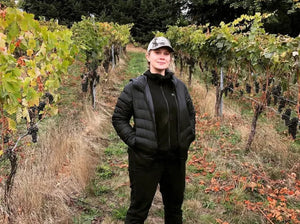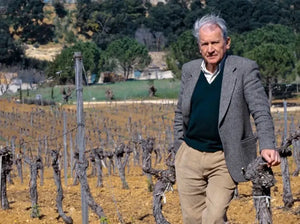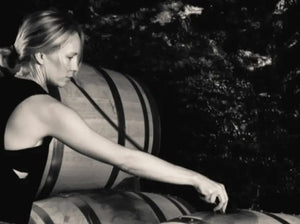Blog » Cabernet Sauvignon
-
Inconnu: California Cabernet Game-Changer
There are U.S. trailblazers, and there are game-changers, but you rarely find both under one roof. Laura Brennan Bissell's appropriately named label Inconnu, meaning "unknown," is the 2023 discovery that had me feeling, well, seen.
I generally drink Cabernet Sauvignon from Bordeaux, Santa Cruz Mountains, and Napa/Sonoma. But I only pull those corks when the menu calls for steak or lamb. Simply put, you won't find me watching a David Lynch flick with a glass of Cab––I don't have the interest to imbibe for 2 hours sans food. And that is why Inconnu is as invigorating a game-changer as I've tasted from California in a long time.
Bissell's wines all carry modest alcohol levels (well below what that even means in the regions above), and they have such beautiful balance and finesse that they disappear fast but offer long-lasting joy. They marry the refreshing qualities of a great Cru Beaujolais with the flavor profiles of ripe-not-overripe Cabernet Sauvignon, where black cherries and currants can be found with notes of eucalyptus and mint that make things a lot more exciting––and delicious!
Another thing that makes clear these wines were destined to be KWM mainstays is their origin, coming from the same distributor/importer as Clos Rougeard, COS, Soldera, Roagna, and Duroché, to name a handful). At the portfolio tasting last month, I was taken by how each red, regardless of their modest pricing, stood toe-to-toe with one another. I went back multiple times for tastes and was still hard-pressed to pick a favorite––they were all endowed with the kind of grace and intensity that separates the good from the great.
Do not miss these GREAT California reds that check all the boxes for Old World wine lovers and "New California" enthusiasts. And don't miss the crystalline Chenin Blanc from old vines in Clarksburg! -
Languedoc's Jewel: Mas de Daumas Gassac
Outside of the iconic Cabernet Sauvignon addresses in Bordeaux, there's one name in France that can go toe to toe with these chateaux: Mas de Daumas Gassac. As always, the provenance of older wines is a critical factor in the quality you'll find in the glass, and I'm thrilled to offer this mint condition collection from Languedoc's star estate.
Mas de Daumas Gassac was established in 1970 when Véronique and Aimé Guibert came across an abandoned farmhouse owned by the Daumas family along the Gassac River in the Herault. Underground water springs and surrounding mountains created a microclimate mirroring Bordeaux's Médoc, so they planted vine material from First Growth chateaux in Bordeaux. The region has an abundance of 100-plus-year-old plantings, with a dry climate favorable for organic viticulture.
Made of 70% Cabernet Sauvignon supplemented with Cabernet Franc, Merlot, Pinot Noir, Tannat, and Malbec, the wines highlight espresso, dark chocolate, cigar box, brambly blackberries, and savory spices. Still, Languedoc's cooling influences and limestone bedrock have long stood out as a beacon for freshness. Alcohol levels have remained modest through stylistic shifts, never taking Bordeaux's cues when things drastically changed in the '80s. -
Timeless Napa Cabernet: Diana Snowden
Finding jaw-dropping hillside vineyards beyond each weave and turn of Napa Valley's roads is common. However, finding winemakers that live up to the landscape by pursuing graceful, nuanced, and site-specific wines is more of a challenge. Diana Snowden Seysess typifies this essence like few others in the valley do, and the winery's history explains why the personification of place is her ultimate intent.
Snowden eschews many winemaking practices that have become commonplace today. No cultured yeasts are employed, no enzymes to enhance color, no "bleeding" of the must for concentration, no fining, and no sterile filtration. Diana presses off the skins when they're dry rather than ongoing maceration to pick up more density and extraction. The wines never see more than 50% new French oak.The Snowden Ranch began in 1878 after the Homestead Act encouraged the settlement of new agricultural lands in the valley. The Snowden family took control of these vineyards in 1955, planting different parcels of Cabernet Sauvignon. Through the 1980s, the family worked closely with Warren Winiarski of Stags Leap Cellars to improve their vineyards. Finally, Snowden Vineyards produced its first wines from the family estate in 1993.
Diana grew up in Napa Valley and graduated from the UC Davis Viticulture and Enology program. In 2003, she became the oenologist at Domaine Dujac and worked alongside her now-husband, Jeremy Seysses, crafting some of Burgundy's most celebrated wines. Her time between Napa and Burgundy brings extraordinary perspective. These wines re-shape how Napa Valley speaks to sense of place.
.svg?v=162776257677185172071724397232)





